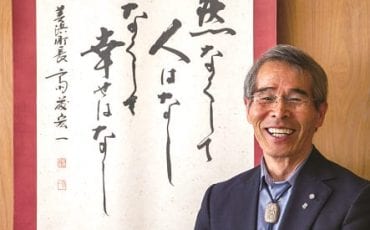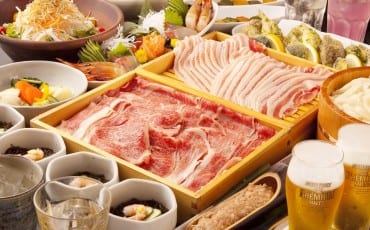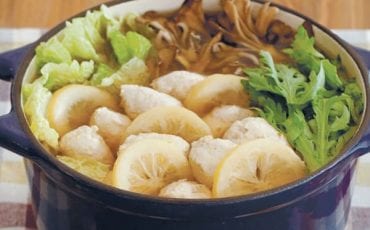- OISHII
- Articles
- Chefs Interview
- Into The Minds Of Masters
Articles
Chefs Interview
Oct 1, 2013
Into The Minds Of Masters
Ramen may not be an indigenous Japanese dish, but the versatility of the dish has spawned many outstanding creations. We speak to three Ramen masters – Kenji Tsukada, Shigemi Kawahara and Keisuke Takeda – to find out the art behind their culinary innovations.
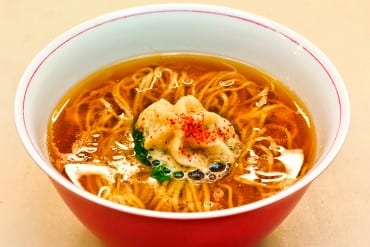
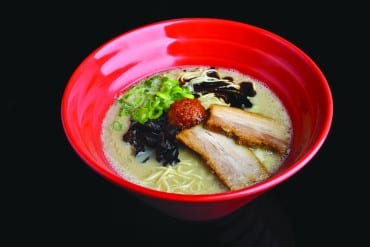
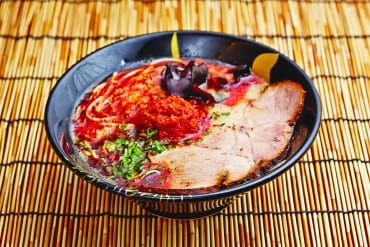
Believed to have originated from China, Ramen started making an appearance in Japanese eateries by the early 1900s. Restaurants serving Chinese cuisine offered a simple Ramen dish that consisted of noodles, a broth flavoured with salt and pork bones and a few toppings. However, the dish soon rose to prominence in the 1960s after the invention of instant Ramen by Momofuku Ando, founder and chairman of Nissin Foods. By the 1980s, Ramen had become a ubiquitous Japanese dish, enjoyed across the country in its many varying styles. In a few short decades, Ramen restaurants went from numbering a couple of hundreds to several thousands. What started as a casual dish of convenience for students and blue-collared workers has now evolved into a chic cultural icon that spans the globe and influences other cuisines.
In Japan, Ramen dishes are typically served in a meat- or fish-based broth, often flavoured with Shoyu or Miso. Some of the more common toppings include Chashu (sliced roasted pork), Negi (spring onions) and Ajitsuke Hanjuku Tamago (flavoured half-boiled eggs.) Because of the versatility of the dish, Ramen masters from the different regions in Japan have come up with many distinctively regional flavours. Sapporo and Hakata styles of Ramen are arguably two of the most prominent regional creations.
Sapporo Ramen is famous for its rich Miso broth that’s usually topped with sweet corn, butter and finely chopped pork and garlic. Because of its close proximity to the sea, local seafood like scallop, squid and crab are also often added to the mix.
Hakata Ramen originates from the city of Fukuoka in Kyushu. It’s known for its rich and milky Tonkotsu (pork-bone based) broth and thin, non-curly noodles. Popular toppings included Beni Shoga (pickled ginger), Karashi Takana (spicy picked mustard greens) and sesame seeds.
When it comes to Ramen, the possibilities are quite literally, endless. It’s little wonder then that Ramen masters approach their craft with the meticulous dedication of artisans.
Kenji Tsukada, founder of Bond of Hearts
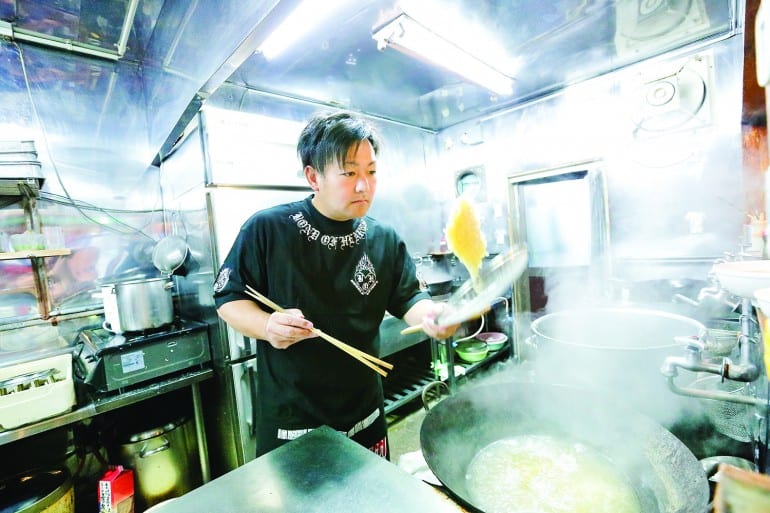
Tell us about your most interesting restaurant concepts.
Gyorai in Tokyo, is one of my favourites, and probably the only ramen restaurant with this concept. What’s unique is how we serve customers the soup in individual coffee siphons. Our soup is made with pork leg, free-range chickens from Aomori prefecture and sea kelp, before being left to settle overnight. Right before serving the customer, we will pour the soup into the siphon and include fresh bonito flakes. What’s great about using coffee siphons is that it gets rid of any unnecessary bits and smells. The result
is a clear, clean and fragrant soup.
Gyorai won “Best Shoyu Ramen in Tokyo” in 2010.
Anything special about the noodles you use in your restaurants?
We currently offer 20 different noodles across the 14 restaurants, but because we constantly churn out seasonal menus, we have over 100 varieties. For the Oishii event in Singapore in November 2013, I will be introducing a type of dry wheat noodles from Akita prefecture. It’s usually used for Inaniwa Udon, but I’ve adapted it so that it’s suitable for Ramen. I hope the consumers in Singapore will like it.
How do you come up with such unique concepts?
My inspiration comes from everywhere, including movies and magic bars (a sub-culture in Japan where magicians perform tricks at bars.) However, a lot of my inspiration comes from international cuisines. I enjoy dining out, and spend an average of S$10,000 to S$12,000 a month just eating at various restaurants.
Ever worry that you'll run out of ideas one day?
Never. My ideas are unlimited; I can come up with 30 different concepts at any given time. But I need “Ramen soldiers” to help me implement these ideas.
Any plans to expand your business to Singapore?
Yes, I would love to. My business philosophy has always been to be honest and sincere. I just want to make people happy with my Ramen.
Tsukada opened his first Ramen restaurant at the age of 22. Now 42, he has 14 restaurants across Japan, all with different concepts. The name of his business is “Bond of Hearts” because he believes that despite the various concepts, what ties his restaurants together are his staff’s dedication to creating excellent Ramen for customers.
Gyorai
#102 Arsion Bunkyo Koishikawa 1-8-6, Bunkyo Ku, Tokyo,
Tel: 81-3-5842-9833
Shigemi Kawahara, founder of Ippudo
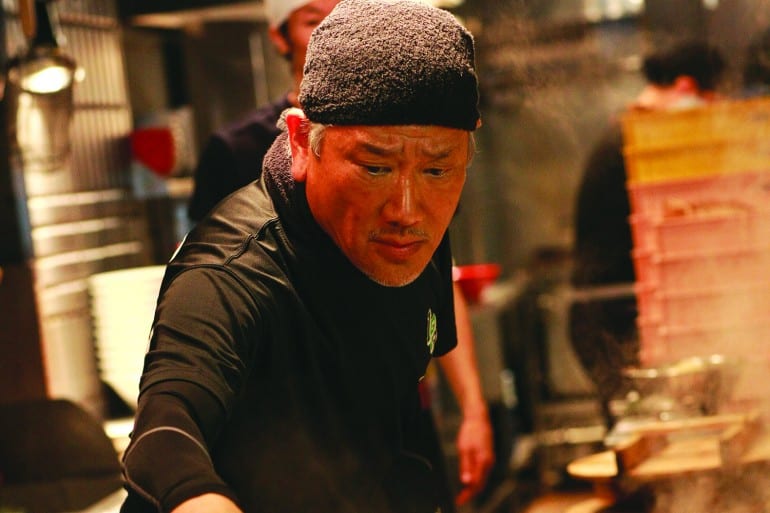
Tell us about Ippudo’s signature ramen.
Shiromaru Motoaji is Ippudo’s original Tonkotsu broth served with Hakata-style thin and straight noodles, pork belly, cabbage, black fungus and spring onions. It’s smooth, rich and flavourful, yet light on the palate.
Can you share with us the secret behind this Tonkotsu broth?
It is perfected through an elaborate process of cooking pork bones for more than 15 hours, before blending the broth with three cooking stages to achieve a creamy, delicate soup with a light aroma.
Any special cooking method for the Chashu (sliced pork) in your Ramen?
Our pork are all locally sourced. The method of preparation involves continually adding new batches of Shoyu to stew the meat overnight. We have a policy of sourcing the majority of our ingredients locally. In fact, we specially set up a factory in the north of Singapore to manufacture the noodles and prepare the soup served at our restaurants. This is to ensure only the freshest ingredients are served daily.
What made you decide to expand your business to Singapore?
Because Singapore is the heart of Asia. I always choose locations where there’s plenty of buzz. That’s why I set up my restaurants in places like Greenwich Village in New York, and Pitt Street in Sydney. One of my upcoming projects in Singapore is a casual eatery in the heart of the Central Business District.
What are some of the main differences between the Japanese and Singaporean taste preferences?
I take into consideration that the people in Singapore tend to be more sensitive towards salt and oil, and adjust my recipe accordingly. Even the restaurants in different parts of Japan have varying recipes to suit the palate of the different regions. I always try to get a feel of local tastes by speaking to the locals as well as dining at local eateries.
Finally, do you eat instant Ramen?
Yes, of course! In fact, one of the first dishes I ever prepared was a bowl of instant Ramen. That was when I was about seven years old.
Walk past either of the Ippudo outlets in Singapore and there’s inevitably a crowd of people waiting to get in. That alone is testament to its popularity. Before Ippudo was founded in Japan in 1985, Ramen bars were seen as blue-collar eateries frequented by men. A man ahead of his time, Kawahara created a sexy new concept for Ramen restaurants, and is now the proud owner of 24 restaurants across eight countries. These do not include the restaurants he has in Japan.
Ippudo Ramen
333A Orchard Road, #04-02/03/04 Mandarin Gallery, Tel: 6235 2797 and 207 River Valley Road, #01-55/56 UE Square,
Tel: 6887 5315.
Keisuke Takeda, founder of Ramen Keisuke
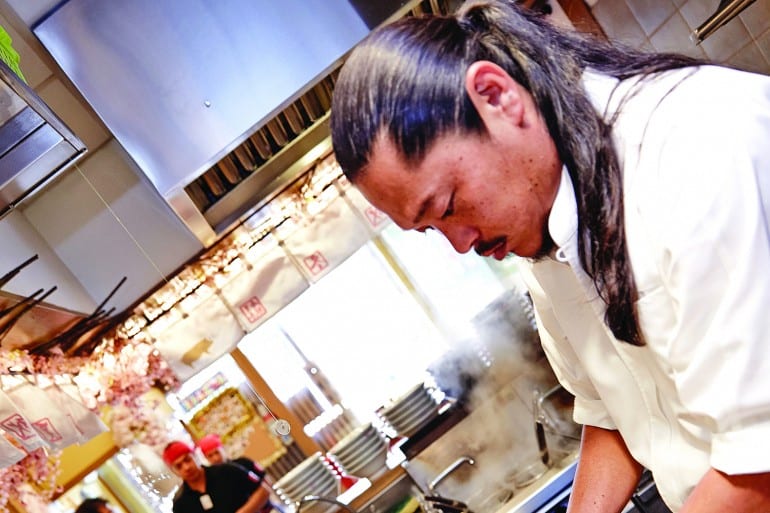
Tell us more about the concept behind Tonkotsu King Four Seasons.
Everything here – from the food to the interior design right down to the crockery – is a reflection of the four seasons in Japan. For example, you’ll find Japanese seasonal ingredients like bonito fish and mushrooms in the Autumn section of the menu. The classic Tonkotsu Ramen falls under the Winter section of the menu, because it’s a dish that the Japanese enjoy during the colder months. Of course, in Singapore, the diners eat it all year round.
What is the secret behind your great-tasting Ramen?
Our soup is made with pork bones boiled for at least 11 hours, and is rich and creamy. The noodles are also specially sourced from a factory in Japan. Interestingly, this factory set up a branch in Singapore about the same time I set up my restaurant, which makes things more convenient for me.
What do you look out for when you eat a bowl of Ramen for the first time?
I usually order the most basic Ramen, without any frills so that I can get a real feel of its actual taste. The noodles have to have a nice bite to it, with a distinct flavour of wheat. It should also complement the soup well, whether it’s a Miso, Shoyu or, Tonkotsu soup base.
What sets your Ramen restaurants apart from the competition?
I’ve always believed that to truly enjoy a dish, you need to enjoy your entire dining experience. This is why I place great emphasis on high standards of service and hospitality across all my restaurants. Service aside, I also put in a lot of effort to come up with new concepts for my customers. For example, I have an outlet in northern Japan where I serve only Sapporo Ramen, which is Miso-based Ramen that is served piping hot … perfect for the climate in the north.
There seems to be plenty of new Ramen offerings coming up – for example, those with Western ingredients or even the ramen burger (where a beef patty is placed in between fried Ramen buns). What are your thoughts on such fusion creations?
I think it’s great. Ramen is meant to be a
versatile dish, where you experiment with different flavours and styles. However, certain culinary sensibilities still need to be adhered to. For example, Sashimi is meant to be eaten raw. It wouldn’t make sense to add it into ramen.
With a background in fine French cuisine, one might wonder why Keisuke Takeda ended up helming over 20 Ramen restaurants across Asia. This self-taught Ramen master says he was intrigued by the flexibility of the dish, and enjoys the creative process of coming up with new Ramen styles. With his mind constantly focused on how to improve his craft, Keisuke says he eats about 400 bowls of ramen a year!
Tonkotsu King Four Seasons
158 Rochor Road, Bugis Village, Tel: 6333 5740.
Text Vanessa Tai





